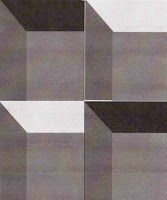
I'm thankful for lots of things in this world. Some of those things are General Tso's chicken, hugs from my kids, and simple machines.
Simple machines doesn't mean machines that don't know much. It means tools that provide mechanical advantage, or increase the amount of work someone is able to do. The six simple machines are the pulley, wheel and axle, lever, wedge, screw and inclined plane.
Any of these six can be combined to make more complicated machines, like.... marshmallow launchers.
I have to admit that as a teacher my lesson plans often include elements to make me laugh, but this time I think it was the students who got the laugh.
This week myself, two bags of large marshmallows and twenty-some students covered the basics of simple machines and used at least one simple machine to make three launchers: high-flying, far-flying, and precise flying to a target.
It was highly amusing to see four teams of students working furiously with styrofoam cups, lego blocks, rubber bands, foam plates, bamboo skewers, a yardstick, paper and tape. Launchers went on a table and marshmallows went in the launcher so that no part of a student touched the mini-astronaut before it flew.
There were a number of lever-type launchers with fulcrums, some "wheel and axle" devices with the skewer poked through a plate and a notable, alarming bow and arrow. To be fair, the only simple machine really in the bow and arrow was a foam plate wheel on the bottom, but they did cover themselves. The arrow group stuck a marshmallow on a skewer, ran the skewer through a hole in the yardstick, used rubber bands for tension, and swish - I've never seen a marshmallow move so fast.

I have to disclaim here that my husband was rightfully upset with me since I had as the target for precise launchers my face, and more specifically my mouth. In my defense I was picturing soft arcs of delicious marshmallows, not speedy dangerous marshmallows, but still - don't shoot sharp things at anyone's face, not even if the sharp things are tipped with marshmallows.
The goals of this exercise were to teach a STEM concept (simple machines), foster creativity, practice the design cycle AGAIN, and have students own these ideas by doing and making. I'd say it went well. My only change would be to have someone else hold the bag of marshmallows. I think I ate about twenty of them.





